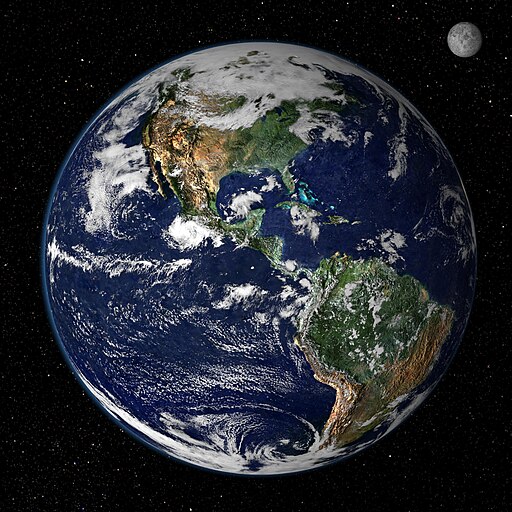Constellations, Planets, and Astronomical Events Visible in July 2023
-written and compiled by Alyssa Whalen
Now that the solstice has passed, it is now officially summertime! Enjoy the long days and warm weather, and hopefully the summer nights will be clear enough to go out and observe. The sun will rise around 6:15 am, and set near 9:00 pm everyday; although the days will now begin to slowly grow shorter. Since we are still in the height of summer, we are losing daylight at a rate of only 1 minute and 20 seconds per day, but that rate will increase as we approach the autumnal equinox in September.
The full moon this month is a supermoon! Supermoons are full moons that occur when the moon is at its closest approach to Earth. This is only possible because of the slight ellipticity in the moon’s orbit around Earth. When the full moon is at perigee and full in the same night, it is called a supermoon. The July supermoon occurs the evening of July 3rd. It is often nicknamed the Buck moon, as this is the time of year that male deer grow their antlers. The new moon occurs on July 17th. With clear skies and some luck, this will be the best time to observe during the month.
There is a meteor shower this month! The Delta Aquarids meteor shower runs annually from mid-July to late August. This year, the shower peaks the night of July 29th with a peak rate of around 20 meteors per hour. While the shower peaks on the 29th, the rate of meteors should be fairly constant throughout the shower’s duration. The radiant point of the meteor shower is in the constellation Aquarius, though it will be possible for meteors to appear anywhere. Aquarius will be slightly southward from the eastern horizon around 11 pm the night of the 29th, but the best time to view the meteor shower will be during the early morning of the 30th between 2-4 am when the constellation is higher in the sky. There is a full moon in early August that will make viewing the fainter meteors difficult, so finding a dark sky in the earlier days of the shower (or later in mid-August) when the moon is nearly new might prove to be a better strategy. With enough patience, there should be a number of bright meteors that make a good show even during the full moon.
Mars and Venus are in conjunction this month. On July 1st, the two planets will make their closest approach to one another. The conjunction will be visible in the evening for a few hours after sundown, and the planets will remain close together in the sky. Both planets will be visible at sundown; Venus will set first around 11:20 pm on July 1st, with Mars disappearing below the horizon shortly after at 11:35 pm. They will both set earlier in the night as the month goes on.
Mercury is too close to the sun to be visible at the beginning of the month, but, in the later days of the month, it will begin to appear slightly above the western horizon after sunset. Jupiter continues to rise earlier in the night; now it is above the horizon around 1:45 am. Saturn is becoming more easily observable, as it now rises around 11 pm. Uranus is difficult to observe this month since it does not rise above the horizon until 2:15 am. Neptune rises near midnight; however, both ice giants are not visible without the aid of a telescope or binoculars due to their distance from Earth.
While Ursa Major and Ursa Minor are always above the northern horizon to help guide our stargazing, this time of year there is another popular way to get around. The Summer Triangle is an asterism (a group of stars that form a shape/pattern, but are not officially recognized constellations) made up of the bright stars of three constellations in the summer sky: Vega in the constellation Lyra, Deneb, in the constellation Cygnus, and Altair in the constellation Aquila.These stars are very bright, and can even be seen clearly in light polluted cities, which makes them popular guide stars. The name ‘Summer Triangle’ comes from the fact that these constellations are nearly directly overhead at sundown, and are visible all night during the summer months.
Sources:
https://www.timeanddate.com/sun/@5165418?month=7&year=2023
http://www.seasky.org/astronomy/astronomy-calendar-2023.html
https://earthsky.org/astronomy-essentials/everything-you-need-to-know-delta-aquarid-meteor-shower/
https://www.timeanddate.com/astronomy/night/usa/columbus
Image Credits:
Sunset: Alyssa Whalen
Buck Moon: https://science.howstuffworks.com/buck-moon.htm
Credit: JOHN FINNEY PHOTOGRAPHY/GETTY IMAGES
Meteor Shower Radiant: https://earthsky.org/astronomy-essentials/everything-you-need-to-know-delta-aquarid-meteor-shower/
Mars/Venus: https://www.businessinsider.com/see-mars-venus-align-planetary-conjunction-2021-7
Aquarius/Pegasus: https://stellarium-web.org/
Cygnus/Lyra/Aquila: https://owlcation.com/stem/Exploring-the-Summer-Triangle-in-the-Night-Sky



























